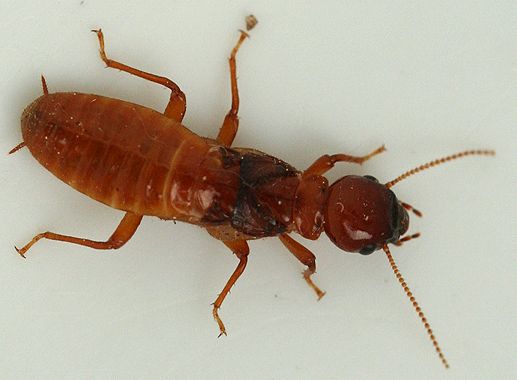Dampwood Termites
What to Know About Dampwood Termites in Central Florida
On this page, we’ll talk about Zootermopsis spp. and Neotermes spp. or simply, dampwood termites. We, at Total Pest Services, a company based in Central Florida, will give you more detailed information on how to identify and cope with this species.

Identification Factors
#1. Size & Overall Appearance
Dampwood termites are the largest of all species, and because of their large size, they have the ability to damage wood more rapidly than subterranean and drywood termites.
#2. Color & Distinctive Features
Dampwood termites are generally brown in color, and while individuals may vary from darker to lighter shades of brown, some may appear reddish.
#3. Behavior, Diet, Habits
Dampwood termites usually don’t nest in the soil as they typically invade decaying wood that is on the ground. Another thing you should know about these species is that there are no dampwood termite workers.
When do dampwood termites swarm in Florida?
Dampwood termites set up nests January through October. As the name suggests, they will only infest wood with high moisture content.
Signs of Infestation
Usually, wood that has been damaged by dampwood termites looks clean on the inside. They eat across the grain, especially decaying wood. If you are doing a dampwood termite inspection yourself, you should look for wood exposed to moisture. These species do not require contact with the soil.
- Ejected wood pellets
- “Velvety” appearance of the wood galleries
- Piles of fecal pellets outside wood galleries
The Solution
What you can do about preventing dampwood termite infestation is to solve moisture problems such as plumbing issues, leaks, damaged roof or siding, and others. A good practice is to replace any damaged wood as this is still a nice treat for this species.
Contact us to take advantage of our warranted termite control services or to learn more details about our service!
